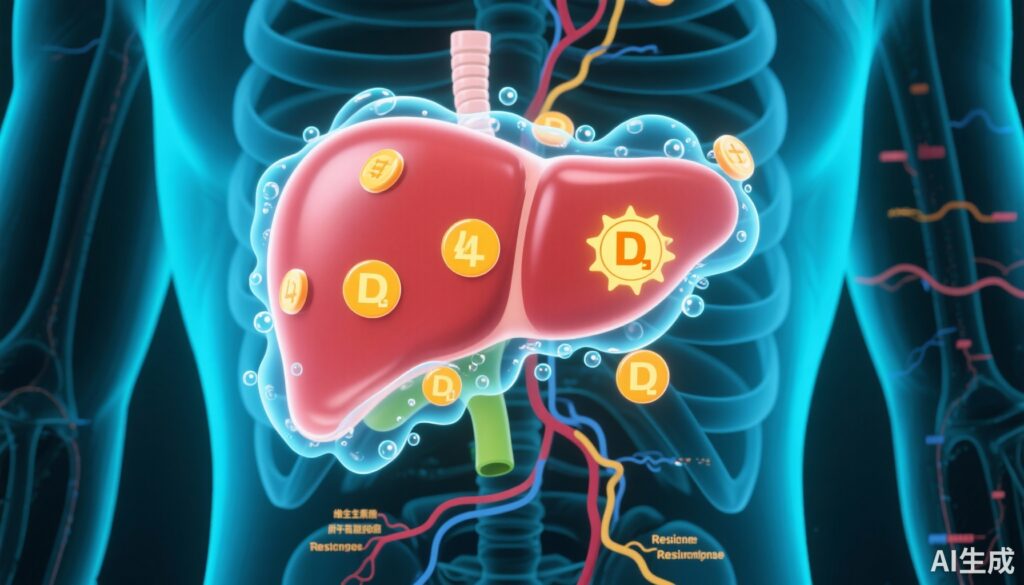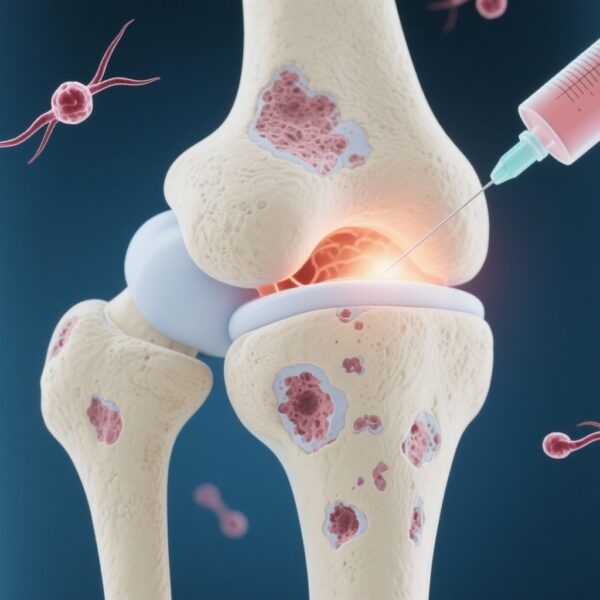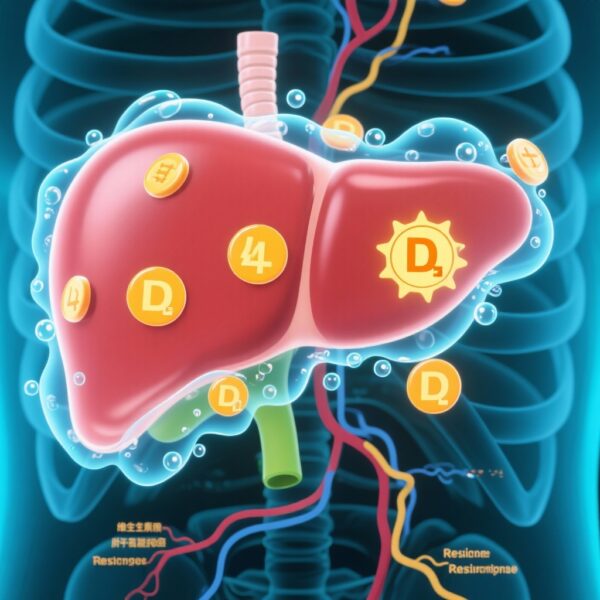Highlight
- Vitamin D supplementation significantly reduces liver enzymes (ALT, AST, GGT) and metabolic markers such as insulin and HOMA-IR in chronic liver disease patients.
- No significant effects were observed on overall survival, liver fat accumulation (CAP), or liver stiffness (LSM) across 46 randomized controlled trials with 4084 patients.
- The metabolic improvements, although statistically significant, were modest, indicating limited impact on major clinical outcomes.
- Current evidence underscores the need for further adequately powered randomized trials to better define vitamin D’s role in chronic liver disease management.
Study Background
Vitamin D deficiency is a prevalent comorbidity in patients with chronic liver disease (CLD), partly due to impaired hepatic hydroxylation capacity and impaired intestinal absorption. Given vitamin D’s immunomodulatory and antifibrotic properties, international hepatology societies recommend supplementation in cases of confirmed deficiency. However, the clinical benefits of vitamin D supplementation beyond correction of serum levels, especially regarding liver-related outcomes, remain ambiguous. Existing trials show inconsistent results regarding vitamin D’s effect on liver injury markers, disease progression, and patient survival, prompting the need for comprehensive synthesis of high-quality evidence.
Study Design
This systematic review and meta-analysis incorporated data from 46 randomized controlled trials (RCTs), involving a total of 4084 patients diagnosed with various forms of chronic liver disease, including viral hepatitis, nonalcoholic fatty liver disease (NAFLD), and cirrhosis from diverse etiologies. Vitamin D supplementation regimens varied, but generally involved oral formulations administered over timeframes ranging up to 12 months. Comparators included placebo or standard care without vitamin D.
The primary outcomes assessed were overall survival, controlled attenuation parameter (CAP) reflecting hepatic steatosis, liver stiffness measurement (LSM) indicating fibrosis, and changes in liver enzymes (ALT, AST, GGT). Secondary outcomes evaluated metabolic parameters such as lipid profiles, insulin concentration, and homeostasis model assessment of insulin resistance (HOMA-IR).
Data extraction encompassed pooled risk ratios (RR) for survival and mean differences (MD) with 95% confidence intervals (CI) for continuous variables, synthesized using a random-effects model to account for inter-study variability.
Key Findings
Survival Outcomes
Four RCTs reported survival data at 6- and 12-month intervals. At 6 months, vitamin D supplementation yielded a non-statistically significant increase in survival (RR 1.14; 95% CI 0.85–1.54). At 12 months, survival rates between vitamin D and control groups were essentially equivalent (RR 0.99; 95% CI 0.83–1.17), indicating no survival advantage.

Liver Structural Parameters: CAP and LSM
Analyses of hepatic steatosis via CAP across 3 RCTs showed no meaningful reduction associated with vitamin D supplementation (MD -23.50 dB/m; 95% CI -81.72 to 34.72), nor did LSM measurements of fibrosis improve significantly (MD -0.65 kPa; 95% CI -1.98 to 0.68), suggesting vitamin D does not modulate liver fat content or stiffness in the short to medium term.

Liver Enzymes and Metabolic Markers
Vitamin D supplementation resulted in statistically significant but modest reductions in key liver enzymes: ALT decreased by 4.98 IU/L (95% CI -8.28 to -1.68), AST by 3.33 IU/L (-6.25 to -0.40), and GGT by 5.14 IU/L (-6.40 to -3.88). These enzymes are markers of hepatocellular injury and cholestasis, suggesting some improvement in hepatic inflammation.

Metabolic parameters also improved with vitamin D: insulin levels fell by 0.79 μIU/L (95% CI -1.36 to -0.21), and HOMA-IR decreased by 0.31 (95% CI -0.62 to -0.01), indicating enhanced insulin sensitivity. Triglycerides were moderately reduced by 7.59 mg/dL (95% CI -15.09 to -0.81), aligning with beneficial metabolic modulation.

The inclusion of 15 RCTs for HOMA-IR and over 20 RCTs for liver enzymes supports the robustness of these findings, albeit effect sizes remain clinically modest.
Expert Commentary
The modest improvements in liver enzyme levels and insulin resistance may reflect vitamin D’s role in regulating immune responses and glucose metabolism, yet these biochemical changes have not translated into measurable improvements in fibrosis or survival. Potential reasons include heterogeneity of included populations, variable baseline vitamin D status, differences in supplementation dosing and duration, and the multifactorial nature of liver disease progression.
The lack of survival benefit reinforces that vitamin D should not substitute established liver disease therapies but can be considered adjunctive for correcting deficiency and potentially modulating metabolic parameters. Current hepatology guidelines advocate vitamin D supplementation primarily to prevent musculoskeletal complications in advanced liver disease rather than as a direct treatment for liver dysfunction.
Notable limitations of the meta-analysis include modest trial sizes, variability in intervention regimens, and short follow-up periods insufficient to capture long-term clinical outcomes. Further high-quality RCTs are required, particularly focusing on patient-centered endpoints and stratified by disease etiology and baseline vitamin D status.
Conclusion
Vitamin D supplementation in patients with chronic liver disease is associated with statistically significant reductions in liver enzymes and insulin resistance markers, indicating some biochemical benefit. However, current evidence does not support improvements in survival, hepatic fat, or fibrosis within the studied periods. Clinicians should continue to correct vitamin D deficiency in CLD as per guidelines but remain cautious about expecting major hepatic or survival improvements solely from supplementation. Future research should prioritize adequately powered RCTs with standardized dosing and longer follow-up to definitively clarify vitamin D’s therapeutic role in chronic liver disease.
Funding and Registration
This systematic review and meta-analysis is registered with PROSPERO (CRD42022370312). Funding sources were not specified in the article.
References
Martinekova P, Obeidat M, Topala M, Váncsa S, Veres DS, Zolcsák Á, Pál M, Földvári-Nagy L, Banovcin P, Erőss B, Hegyi P, Hagymasi K. Role of Vitamin D Supplementation in Chronic Liver Disease: A Systematic Review and Meta-Analysis of Randomized Controlled Trials. Nutr Rev. 2025 Nov 1;83(11):2043-2054. doi: 10.1093/nutrit/nuaf117 IF: 4.9 Q1 . PMID: 40644459 IF: 4.9 Q1 ; PMCID: PMC12512233 IF: 4.9 Q1 .



